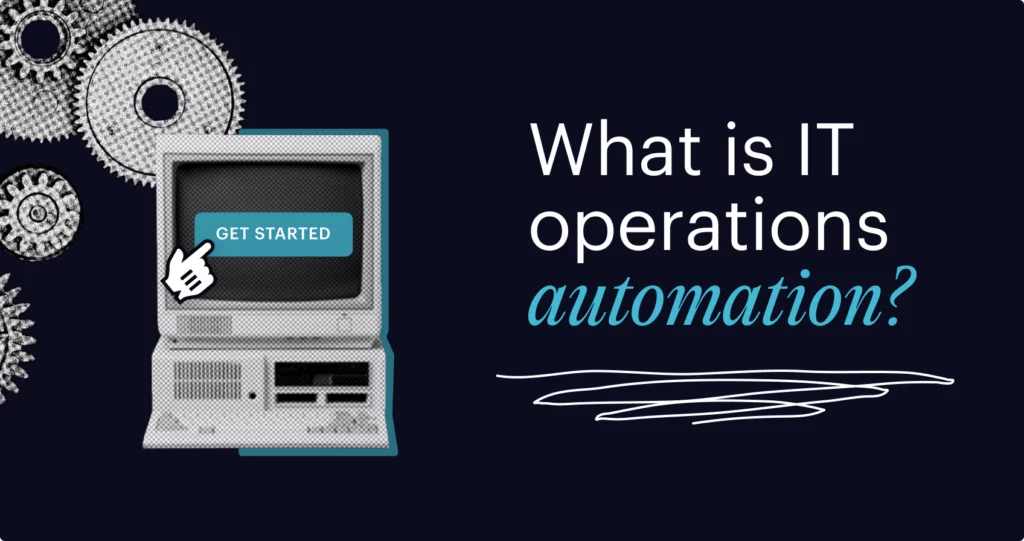What is IT operations automation? Understanding DevOps, AIOps, and NoOps operation models

Automation holds significant potential for enhancing business operations by streamlining processes and cutting costs. Consequently, numerous organizations are actively incorporating automation into their workflows. However, when it comes to applying automation to IT operations, how does it work?
Delving into the specifics of automating various facets of your IT operations can yield numerous advantages, making it a topic worthy of in-depth exploration. Moreover, it is valuable to gain insight into different IT operations models like DevOps, AIOps, and NoOps.
These terms may already be well within your comprehension or fall under the purview of your IT specialists. Nevertheless, having a high-level understanding of these concepts and grasping how to integrate automation can significantly enhance your strategic planning.
What is IT operations automation?
IT operations automation involves the integration of automation into an organization’s systems and applications, enabling the execution and supervision of crucial processes without the need for manual intervention by staff. This, in turn, allows your IT team to redirect their attention to more significant tasks.
Previously, we’ve explored the benefits of workflow automation for IT teams. Similar to automation in other business areas, the primary objective is to target repetitive tasks that tend to divert your IT team from more pressing responsibilities. For instance, you can implement automation to facilitate data extraction from your ETL layer.
Furthermore, IT operations automation has the potential to streamline troubleshooting procedures and minimize the risk of human errors. The specifics of IT operations automation may differ from one business to another, depending on each organization’s unique processes and systems.
How does IT automation work?
You can use different software tools to understand and perform any required actions. In some cases, you can schedule these actions or manually trigger them. In other cases, such as when there is an increased demand on your IT capacity, actions can be automatically activated.
Automation can reduce the workload of IT staff by “taking over” actions and responses typically occurring when an IT team member manually executes them. Your IT admin can build better IT automation by combining several execution scripts into a series.
When planning automation, consider the size of your business and the scope of your current IT operations. You may choose enterprise-level automation tools that track different processes and trigger actions when a certain threshold is reached.
With more advanced IT automation tools, you can delegate tasks such as system configuration, software use, and even which servers run processes.
Remember that adopting automation shouldn’t be a hasty, all-encompassing decision. In other words, avoid automating every single process within your organization simply for the sake of it. It’s essential to clearly understand the precise enhancements that automation can bring to each task. To begin, pinpoint the manual and repetitive processes that consume a significant amount of your team’s time and evaluate which departments could benefit from increased efficiency.
Where you can apply IT operations automation
Knowing how to use IT automation allows you to make more informed decisions. But how can it benefit your business? And where can automation be the most useful?
1. Security/compliance
Security and compliance are essential for nearly every business today. Just think about how much data you handle daily and the strict regulations around sensitive information.
You can use automation to run your compliance, security, and risk management policies across your infrastructure. Automation can also help mitigate issues quickly by building automated steps if or when a problem occurs. Automation can also help make security/compliance audits easier.
2. Incident management
How quickly any organization responds to an incident is crucial. Automated systems can restore services quicker and reduce errors.
One of the advantages of IT operations automation is that it can help reduce the cost and duration of incidents. If an incident occurs, your automated system can quickly identify the issue and who will remedy it.
3. Deploying applications
It doesn’t matter what approach you use when deploying applications. Automating the process can improve the results.
Consider automating essential tasks in app deployment, especially during the testing period. By streamlining the process, you can deploy applications more efficiently and successfully.
It can give you a more integrated workflow from building stages through testing and deployment. Looking at how workflow automation benefits businesses could offer your organization fundamental ideas.

What are the benefits of automation?
When any business considers change, one of the first things they consider is the benefits of the new process. Knowing what benefits IT operations automation offers makes it easier to ensure your entire C-suite is on board with the changes.
Consider the following:
- Lower costs: Your IT overheads can be significant, particularly for larger organizations. Automating certain areas of your IT operations, such as application deployment or patch management, can reduce overhead by making IT operations more efficient and reducing errors.
- More uptime: Downtime can cost your business money. Automation reduces downtime by monitoring your systems and responding more quickly with automated recovery and backup processes.
- Increased productivity: Automation focuses on repetitive and manual tasks like application testing. This allows your IT teams to focus on more critical tasks. In turn, this boosts their productivity levels.
- Higher performance levels: The digital era means more demands are placed on your IT and operations teams than ever. Automation means you can streamline various processes and achieve higher levels of performance without growing your IT teams.
- More reliability: Human errors can be costly and frequent, especially regarding repetitive tasks. Automating those tasks can lead to significant improvements in reliability. It also vastly reduces the incidences of human error. A good example is the use of automation in call center systems technology. Queue management, interactive voice control, and automated call center dialers can improve metrics across the board.
- Better governance: Your IT admins can perform tasks differently with automation. You can implement policies that provide consistency in how specific tasks are carried out. This can be especially useful when it comes to security and compliance.
- Not just better but faster: Manual processes and tasks take time that could be better spent elsewhere. With automation, you can streamline and speed up those tasks — regardless of the size and complexity of your infrastructure. Automation allows for swifter workloads across your system, allowing administrators to focus their attention on other tasks.
- More flexibility: By implementing IT operations automation, you ensure you are more flexible and adaptable. This is useful especially when there are changes to your IT infrastructure or new technologies and practices. It means you can change your processes with less work than if you did so manually.
- Better integration capability: An automated system — with high integration and interoperability capability — can help you implement and make the best use of new tools and software faster.
- Improved communications: There are various ways that automation can benefit your communications. One example is automating document workflow to improve career development and training.
Which IT operations models can benefit from automation?
Different types of businesses may use different business models. Similarly, your IT teams and IT infrastructure will use different operation models that recognize your business needs. You should look at what those needs are and where automation can bring some of the benefits already listed.
1. DevOps
DevOps refers to the part of your business — and relevant teams — that combine various practices and tools to deliver services and applications efficiently. Its purpose is to build and deploy products faster than a business that uses traditional development and management processes. A lot of this speed and efficiency can be credited to using automation.
DevOps teams seek to collaborate with anyone relevant to the process to ensure that development is more streamlined from initial concept to deployment.
Automating elements of the overall process, such as testing, can ensure that new products are built, tested, and deployed quicker than before. Simply put, automation can be a game-changer for your DevOps teams.
2. AIOps
If automation is topical, AI (artificial intelligence) is even more trending.
AIOps is Artificial Intelligence for IT operations. It refers to using and applying AI technology, such as GPT-4 or Deep Convolutional Neural Networks, within the broader scope of your IT infrastructure.
AI can optimize your systems and lead to better operational ability and improvements to your delivery systems.
Consider utilizing AI and related tools such as machine learning (ML), natural language processing (NLP), and predictive analytics. This way, you can better manage any size and complexity of infrastructure.
An excellent example of this is ACD automatic call distribution. Here, AI automation routes calls to the correct agent. This removes the need for call center staff to do so manually, allowing teams to detect and solve customer problems more quickly.
3. NoOps
NoOps stands for “no operations,” which refers to completely automating your IT operations and infrastructure and removing the need for any IT staff.
There is some debate that this is aspirational. It aims for an IT operations model that is fully automated and requires no human intervention.
A NoOps model would need multiple technologies that would be fully integrated and interoperable. It would manage all IT-related tasks from the most simple to the most complex. It is seen as an evolution from AIOps models, which still involve a high degree of human input for more complex processes.
Final thoughts
There is little doubt that automation will continue to grow and expand.
Better AI technologies will continue to emerge. At the same time, automated systems’ ability to handle more complex tasks will also expand.
Of course, there is much debate about how much automation and AI will impact human jobs. But, apart from the NoOps model, the likely reality is that systems will still need human interaction.
Focus your automation efforts in areas where there are tedious and repetitive tasks that often see a degree of human error. Automation is another tool that can help streamline your workflows, cut operational costs, and vastly reduce the amount of human errors.
